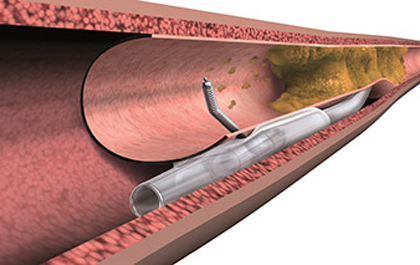Success or failure of total occlusion (TO) revascularization does not affect mortality at 10 years, and this does not depend on revascularization strategy (PCI vs surgery) or location.

The long-term clinical benefit of recanalization and PCI or TO artery bypass graft remains nuclear.
This is a sub-study of the SYNTAXES (Synergy Between PCI With Taxus and Cardiac Surgery Extended Survival) that randomized patients with at least one TO.
Of 1800 patients randomized to PCI vs surgery, 460 presented at least one TO.
TO revascularization, or its absence, did not affect mortality at 10 years, regardless the strategy (PCI Branch: 29.9% vs. 29.4%; p = 0.982 and surgery branch: 28.0% vs. 21.4%; p = 0.330).
Read also: Major Cause of Myocardial Injury by COVID-19.
Neither were there differences between recanalization or revascularization if TO was to the left main or to the anterior descending artery (34.5% vs. 26.9%; p = 0.837).
Conclusion
Recanalization with PCI or revascularization with surgery of a total occlusion does not affect mortality at 10 years, irrespective of strategy type or TO location.
These data support the contemporary practice claiming recanalization should be offered in specialized high-volume centers to patients with angina refractory to optimal medical treatment and with confirmed myocardial viability.
Original Title: Mortality 10 Years After Percutaneous or Surgical Revascularization in Patients With Total Coronary Artery Occlusions.
Reference: Hideyuki Kawashima et al. J Am Coll Cardiol. 2021 Feb 9;77(5):529-540. doi: 10.1016/j.jacc.2020.11.055.
Subscribe to our weekly newsletter
Get the latest scientific articles on interventional cardiology





